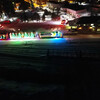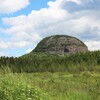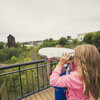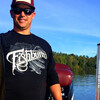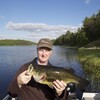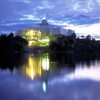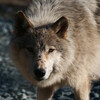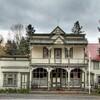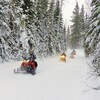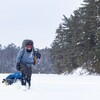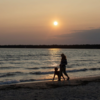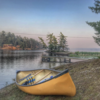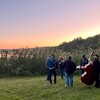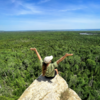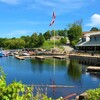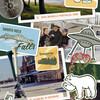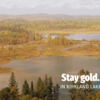
Gateway to The Arctic
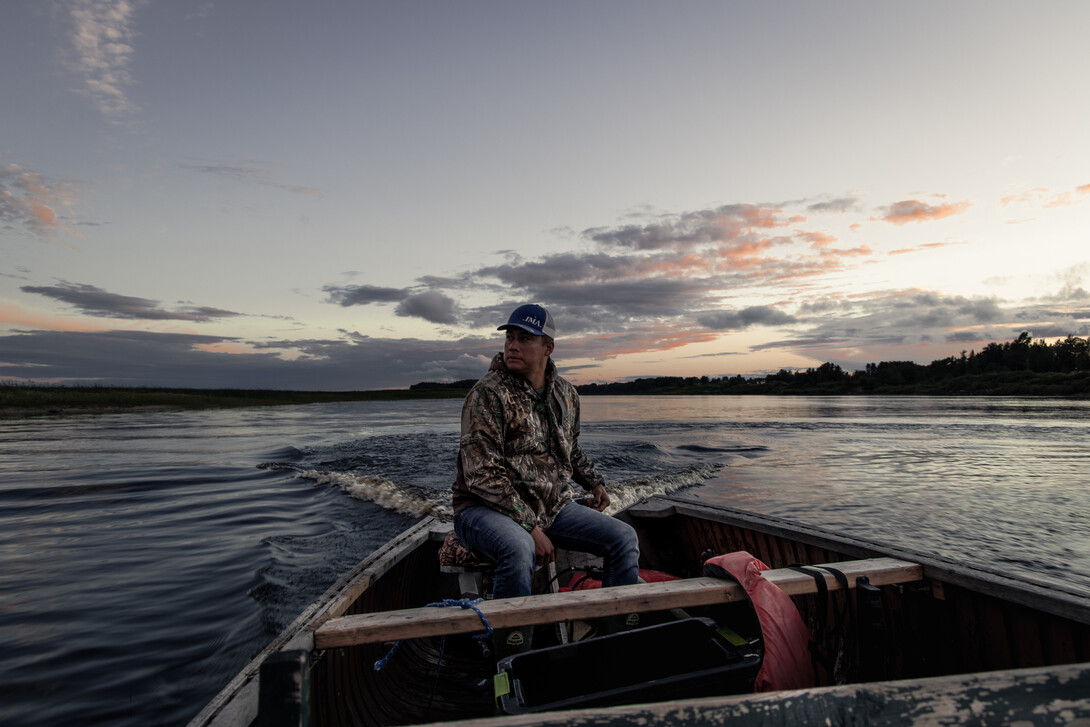
The sun cut through a ceiling of grey clouds that loomed over the Moose River threatening to turn what otherwise looked like a beautiful day of fishing into a wet and gloomy afternoon. Today, we were on the hunt for Walleye. The perfect fish to catch, clean, fillet and batter for a delicious fish fry on the banks of the river. Of course, that all depended on the first step, catching them.
For that, we were grateful to have local fishing guide Ryan Sutherland. Born and raised in the Moose Cree First Nation community on Moose Factory Island, Ryan knew every nook and cranny of the upper Moose River. For generations his family had been catching fish in the Moose Cree homelands. Ryan’s grandfather, a commercial fisherman, took him and his father fishing for Walleye throughout his youth. Ryan learned to catch, clean, and cook them as though it was second nature. He also learned where the good fishing spots were on the river. With Ryan’s unparalleled local knowledge, I figured we had a pretty good shot at reeling in some keepers.
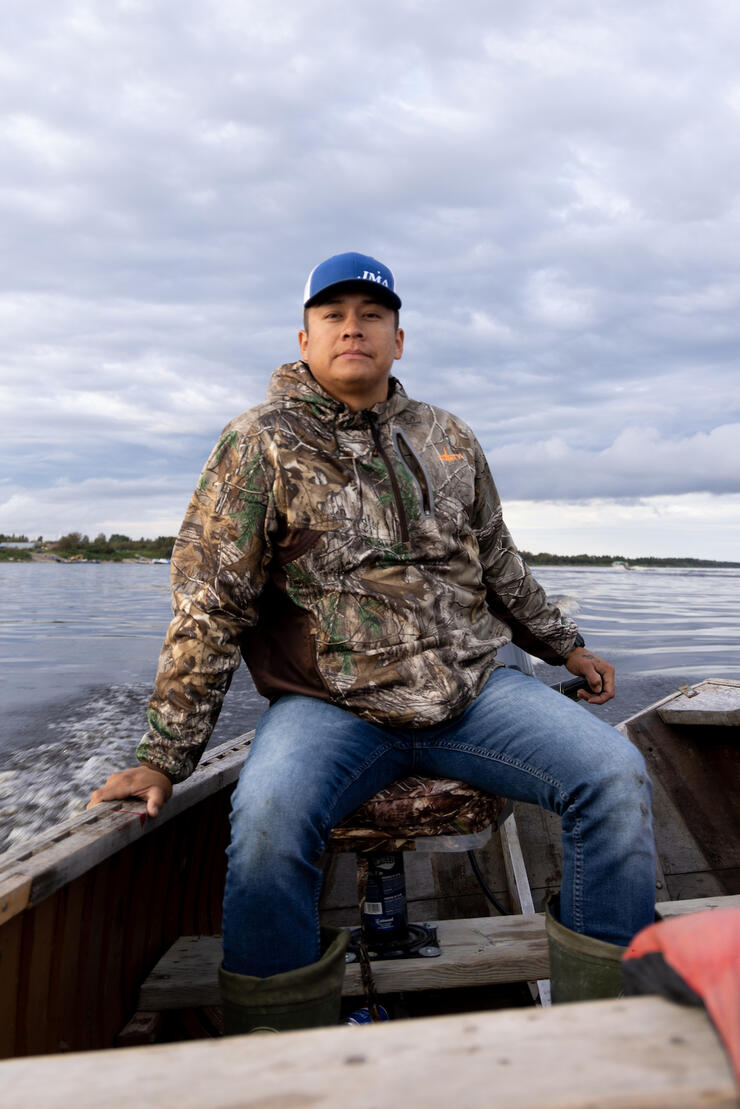
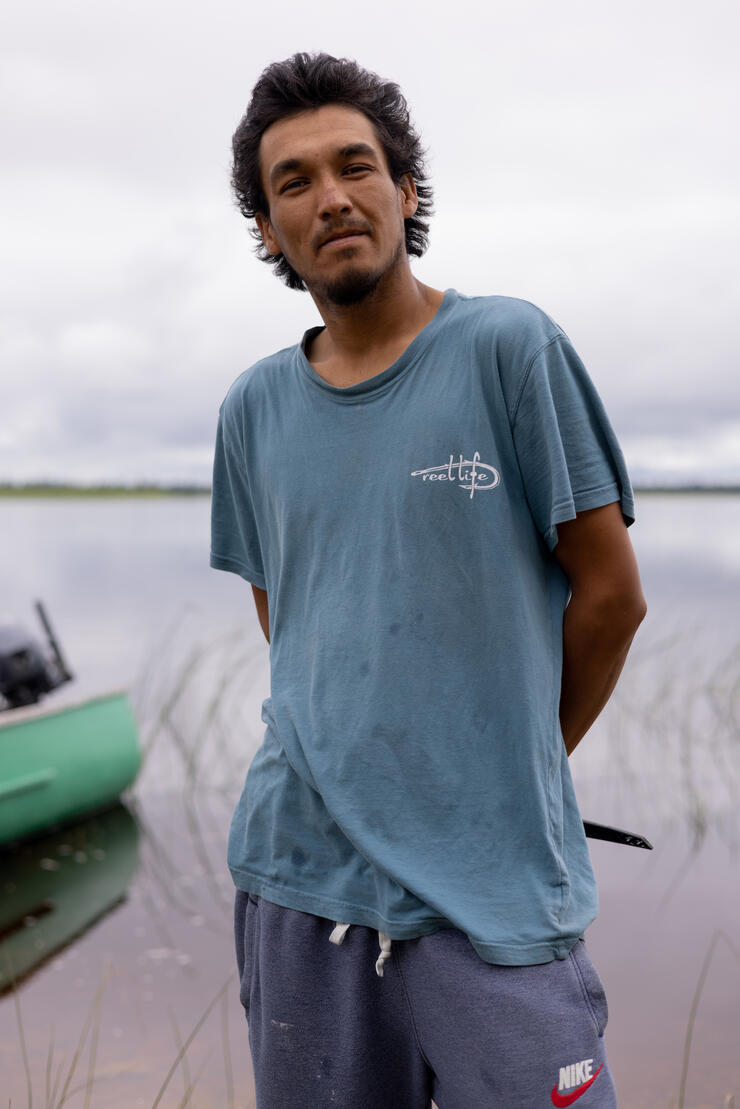
The Moose River is home to some fabulous fishing. Harbouring a variety of species including several Whitefish, Northern Pike, Lake Sturgeon (a protected species in Ontario), and of course Walleye, these waters are an angler's dream.
An angling adventure in a freighter canoe
Joining myself, Ryan, and a family from Chatham (Ryan’s clients joining for the day) was Jay Sutherland. Jay and Ryan grew up together fishing and hunting throughout the Moose Cree Homelands. Today, Jay was working for Ryan as a fishing guide, and hopefully going to lead us towards some Walleye.
The boat of choice for tour operators and water taxi drivers alike in the northern communities of Moosonee and Moose Factory are freighter canoes. Equipped with a motor on their flat stern, these boats, approximately 20-feet or more in length, can take you anywhere from fishing spots upriver to the mouth of the mighty Moose River where it empties into the Southernmost tip of the Arctic Ocean in James Bay.
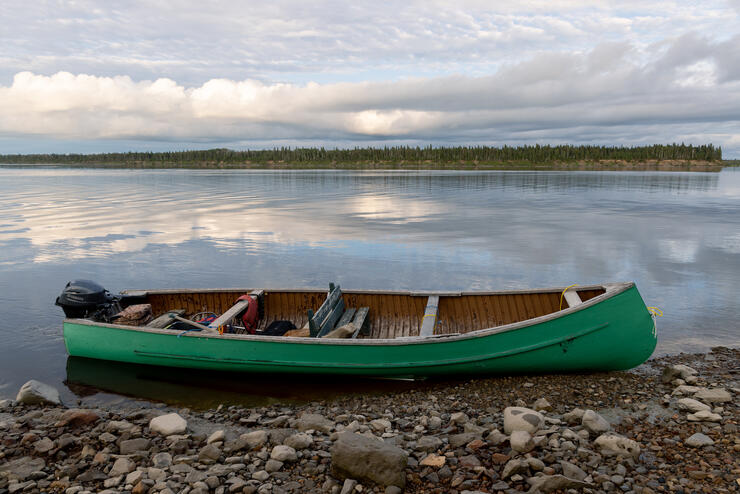
Travelling upriver in the freighter canoe you could see sandy shorelines covered in Tamarack and Black Spruce rushing past. The bow cut through the murky water, spraying either side of the boat as we picked up speed. Looking out towards the eastern shoreline I spotted a beautiful Bald Eagle perched on a dead-standing Spruce tree. Two more followed suit. As we continued towards the North French, multiple sandbars appeared in the river at varying lengths. Jay slowed down as we approached these isolated sand islands with little to no vegetation.
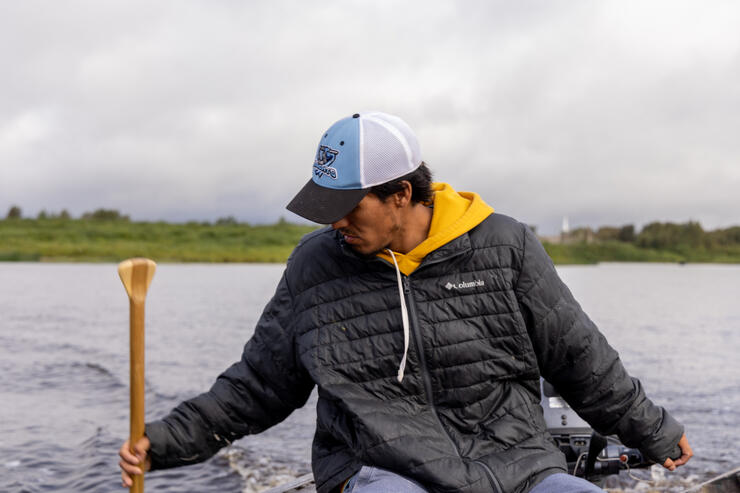
Grabbing a paddle, Jay began to press it toward the bottom of the river in order to monitor the depth. He continued steering the boat upriver, consistently pressing the paddle blade towards the river bed. The sandbars that were visible on the surface indicated that the tide was low. The murky water that surrounded us could be concealing shallow areas that could stop us in our tracks if we were to hit them.
Due to its proximity to the Oceanic waters of James Bay, the Moose River is affected by the changing tides of the Arctic Ocean. Depending on the time of day the depth of the river can change, made apparent by an approximate 2-metre difference hiding or concealing sandbars. If you get stuck out on the river during low tide, there’s nothing left to do but wait until the tides come in again and the water level allows you to continue on your way.
As we approached the North French, we stopped by a section of shallow rocks and slow-flowing water where Ryan shared that he had successfully reeled in a few keepers just days earlier. Tossing anchors into the river, both of our boats were now set in place. It was time to fish.
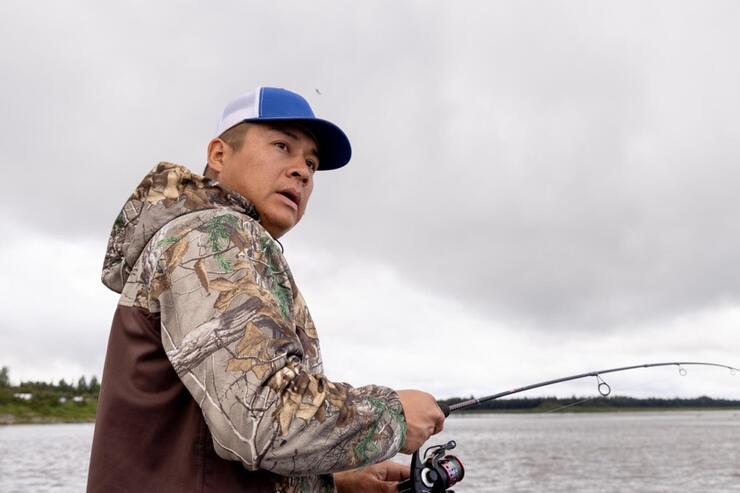
We all tried a mix of casting and jigging in order to lure the delicious Walleye onto our hooks. Almost immediately fish made their presence known. They nibbled, they stole bait, and teased our hooks until finally one of Ryan’s clients let out a cheer of excitement. His rod was bent, his left hand quickly turned the spinner, his right pulled on the rod, and just like that, a Walleye found its way into the boat.
Luckily for us, Ryan brought some of the Walleye that he had caught, filleted, and frozen a few days earlier. Regardless of our luck from the morning, a fish fry was on the menu.
A riverside fish fry
Ryan’s family has a small camp on the bank of the Moose River a stone’s throw away from our morning fishing spots. With permission from Moose Cree First Nation, they built a small cabin on the land equipped with a stove and a generator for electricity. Complete with a tipi for outdoor-style cooking, trails, and an outhouse, the camp was the perfect place to stop for lunch.
Ryan and Jay took out two cast iron pans and began preparing a meal of battered and fried Walleye fillets with fries. The sizzle of the oil as fish was dropped into the pan captivated everyone’s attention in the room. The smell of the fries was mouth-watering and spirits were high as the first round of food was served.
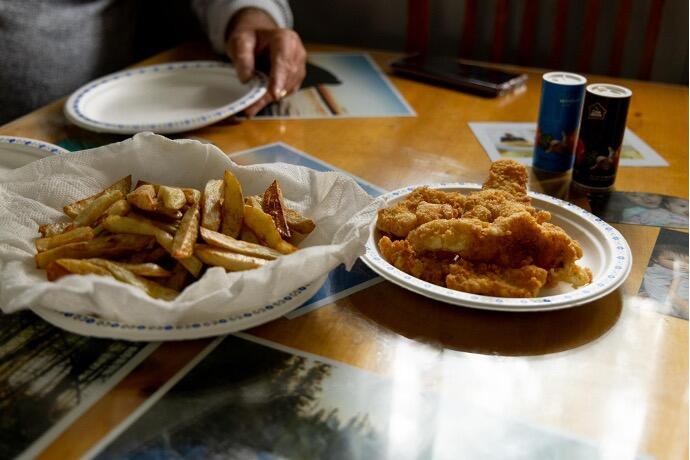
As we ate the sun started peeking through the window of the cabin indicating that the clouds were finally starting to clear. With full bellies we took off back to the boats in order to test out another spot downriver that Ryan thought might give us better luck.
marine life spotting
The motors started up and the camp began to disappear in the distance as we continued for several minutes before turning westward into a narrow section flanked by sandbars on each side. On the Southernmost sandbar a big grey lump sat on the water’s edge. As we got closer, I was struck by curiosity. What was it? Slowly more details began to appear. Large fins, a rounded head, black nostrils, and whiskers. Bathing in the sun was a beautiful harbour seal that had made its way onto the sandbar from the waters of James Bay.
I was fascinated. I’d seen seals before, but this was the first time that I had laid eyes on marine life in the province of Ontario.
The vast majority of people who live in Ontario live nowhere near the province’s forgotten saltwater coastline. Stretching from the Québec border in James Bay northwest to the Manitoba border in Hudson Bay, Ontario holds a significant portion of coastline in the world’s largest inland Ocean. The bay itself is considered to be part of Nunavut, as are all the islands within it, although there are a few exceptions.
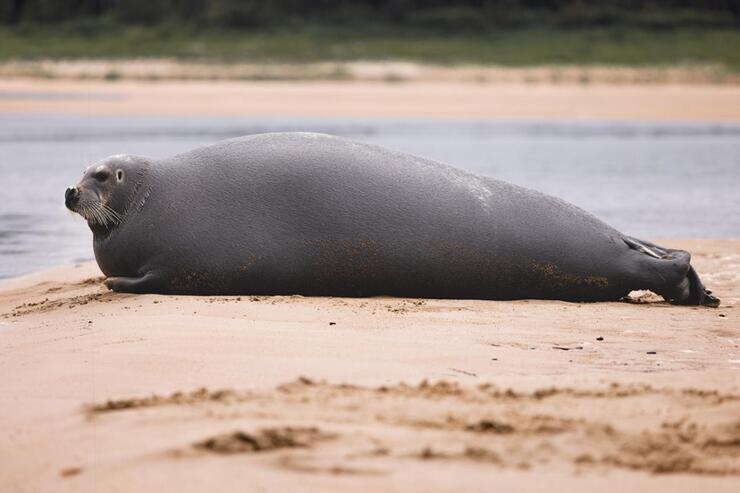
Regardless of geographical borders, when most people think of Ontario, they don’t think of marine wildlife and ecosystems. That’s why people might be surprised to note that Moosonee and the surrounding waters are home to a significant amount of marine wildlife. Mostly abundant in the summer and fall, Seals and Beluga Whales have been known to populate the waters of southern James Bay. Seals make their way into the river and into town. According to several residents that I spoke to, it’s not entirely uncommon to see them basking in the sun on the docks.
I hopped out of the boat and onto the sandbar keeping my distance from the seal. Quickly, I set up my tripod and camera preparing to grab a photo before the seal decided to move. Stretched out on the sandbar, the composition was perfect. As I adjusted my settings and changed my lens, Ryan and the family from Chatham continued upriver. Still within eyesight, they dropped an anchor and began fishing. While the fishing was good, made evident by the faint exclamations I could hear in the distance, I was more interested in documenting marine wildlife in Ontario.
Slowly, I inched my way closer to the seal, respecting its boundaries. With no desire to startle or frighten it I stopped once I felt like I could go no further without making it feel threatened. Snapping shots, I heard a commotion from Ryan’s boat. Walleye, and lots of them. As I was snapping photos of the seal, there was a fish frenzy happening in the water behind me. One after another everyone reeled them in, tossing them back in the river since we had already eaten our fill for the day.
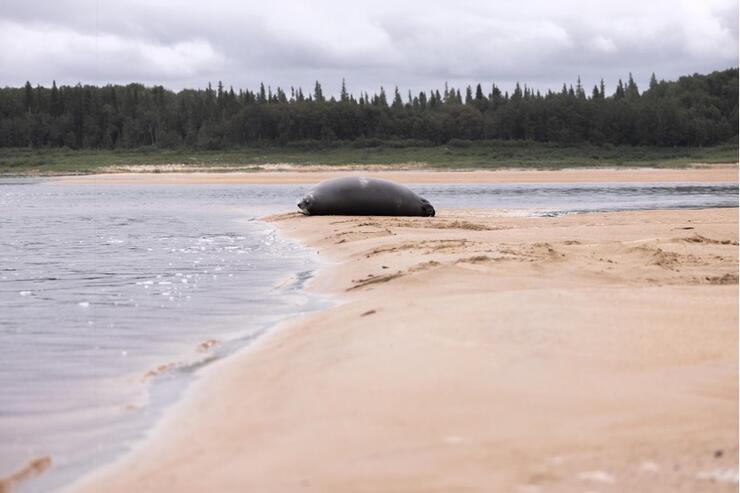
As I turned back around to focus my attention on the seal I heard it shift its weight forward, felt the movement on the ground, and watched as it propelled itself into the water. Just as we had been on the hunt for lunch a few hours earlier, it seemed as though it was time for the best angler on the river to fish.
And the timing couldn’t have been better. The thickening clouds were a telltale sign that it was time to head back to Moosonee. Hopping back in the boat with Jay, we got the motor running and began the short trip downriver.
setting a gill net
Hours later, the rain broke and the sun began to poke through the clouds. With the last glimpse of sunlight threatening to drop below the treeline, I met Ryan down at the Moosonee docks. He started up the boat and we motored towards a thin channel. There, we hopped out, collecting large rocks that would serve as anchors for a gill net. We weren’t done fishing just yet.
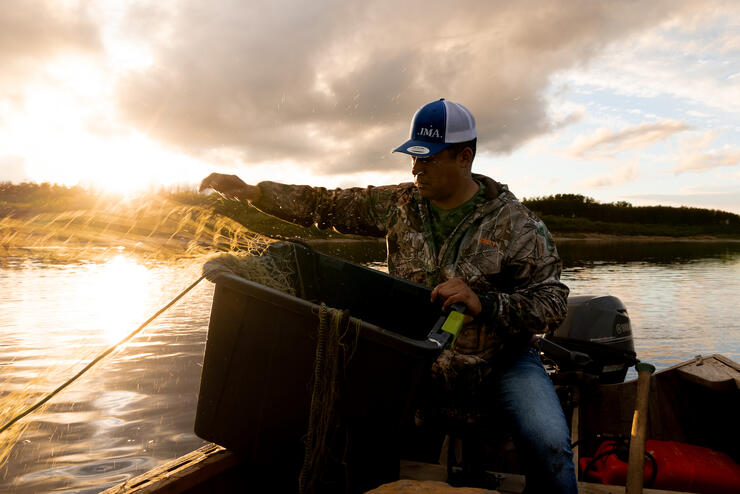
Tying the ends of the net to the rocks, we went out into the channel and tossed them in, making sure that the net was stretched out enough to catch the fish overnight while we slept.
Heading back towards the docks, the sky changed to beautiful hues of blue, pink, purple, and orange. Mesmerized by the setting sun, we rode back in silence, contemplating just how many fish would be waiting for us in the net when we checked it in the morning.
As I sat back in the boat and closed my eyes the wind passed over me. Today, we had been fortunate enough to see beautiful wildlife in the water, on the land, and in the sky. The sun sank lower. I wondered what wildlife I would see on the river tomorrow.
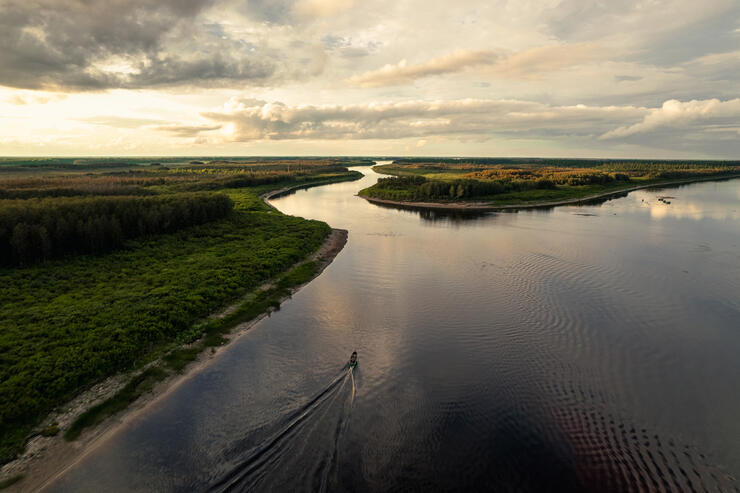
Recommended Articles
The Seven's Best Hikes, Biking Trails and Lakes

7 Best Spots to Check Out in The Seven
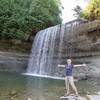
Budget Bliss: Explore Northeastern Ontario Without Breaking the Bank

Bring Your Fam!

Time to Unwind: 6 Spa Havens to Discover In The Seven
5 Amazing Places to SUP in Northeastern Ontario
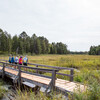
5 Amazing Bike Rides to Discover
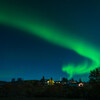
Northern Lights in Northeastern Ontario

Northeastern Ontario's Best Pride Festivals
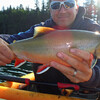
Fish for one of the World's Rarest Species of Trout

An Insider's Guide to Manitoulin Island
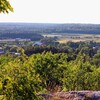
6 Small-Town Gems to Explore in Northeastern Ontario

11 Best Things to Do in Kapuskasing, Ontario



